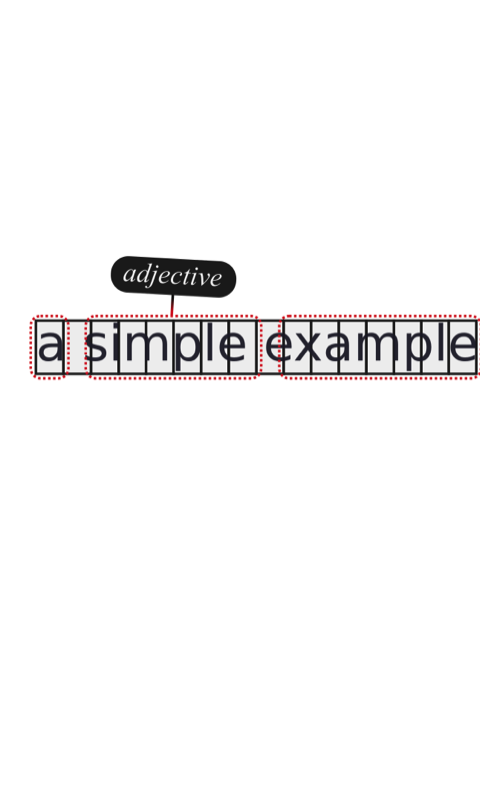5. The uses of annotating segmentations¶
Annotations are bits of information attached to text segments. They let you go beyond what’s in the text, and extend Orange Textable’s analytic capacities from textual content to user-provided interpretative information and metadata.
In Orange Textable, an annotation is a piece of information attached to a segment. Annotations consist of two parts : key and value . For instance, in the now classical case of the word segmentation of a simple example (see :ref: figure 1<uses_annotating_segmentations_fig1> below), segment simple could be associated with the annotation {part of speech : adjective}; this annotation’s key is part of speech and its value is adjective .
Figure 1 : Annotating simple as an adjective.
A segment can have zero, one, or several annotations attached to it. The same segment could be simultaneously associated with another annotation such as {word category : lexical} , or any {key : value} pair deemed relevant.
Figure 2 : Segments with various annotations
Note that annotations keys are unique : Since they serve to recognize various annotation values attached to a single segment, annotation keys cannot be duplicated within the segment. On :ref: figure 2 <uses_annotating_segmentations_fig2> above, “simple” can only have one value at a time for key “category” .
Even though we have carefully ignored them so far, annotations play a fundamental role in text data processing and analysis. They make it possible to go beyond the basic level of forms that are “physically” present in a text and tap into the more abstract–and often more interesting–level of the interpretation of these forms.
For instance, the texts composing a given corpus could be annotated with respect to their genre ( novel , short story , and so on), and the parts of these texts might be annotated with regard to their discourse type ( narrative , description , dialogue , and so on). Such data could be exploited to study the distribution of discourse types as a function of genre, which would be at best extremely difficult, if ever possible, without having encoded the relevant information by means of annotations.
In the following section, we will see a simple method for creating annotations in Orange Textable using the :ref: Merge widget, and then various ways of exploiting such annotations.

